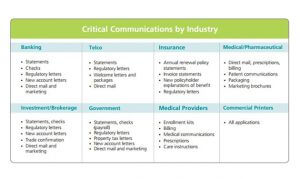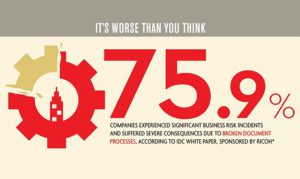Would you do your taxes on 3-lined paper? Or fill out legal documents with a crayon? Or write your bank account information on the outside of your deposit envelope?
You probably wouldn’t. These are all critical communications in your everyday life, and you handle them with the appropriate amount of care. You use the proper forms and protections to ensure that these vital documents get to where they need to be, in the format they need to be in.
And yet, there are scores of these critical communications in businesses all over the world that are printed like they’re just any other document — and that could bring significant trouble for companies who don’t pay these communications the care they deserve.

What do we mean by “critical communications?” Think payroll, statements and cheques. Or letters sent to new accounts. Or press releases. Or legally required communications sent to patients and clients. Regulatory letters. Notices. These types of communications exist in every industry, in some form or another.
What common factors do these communications have? If you answer yes to any of these questions, it’s likely a critical communication:
– Does the document have to be perfect every time?
– Is it regulated in some way?
– Are you required by law to track these documents?
– Does it contain personal information about customers or clients?
In order to maintain regulatory compliance, it pays to have full transparency into your communications processes.


































